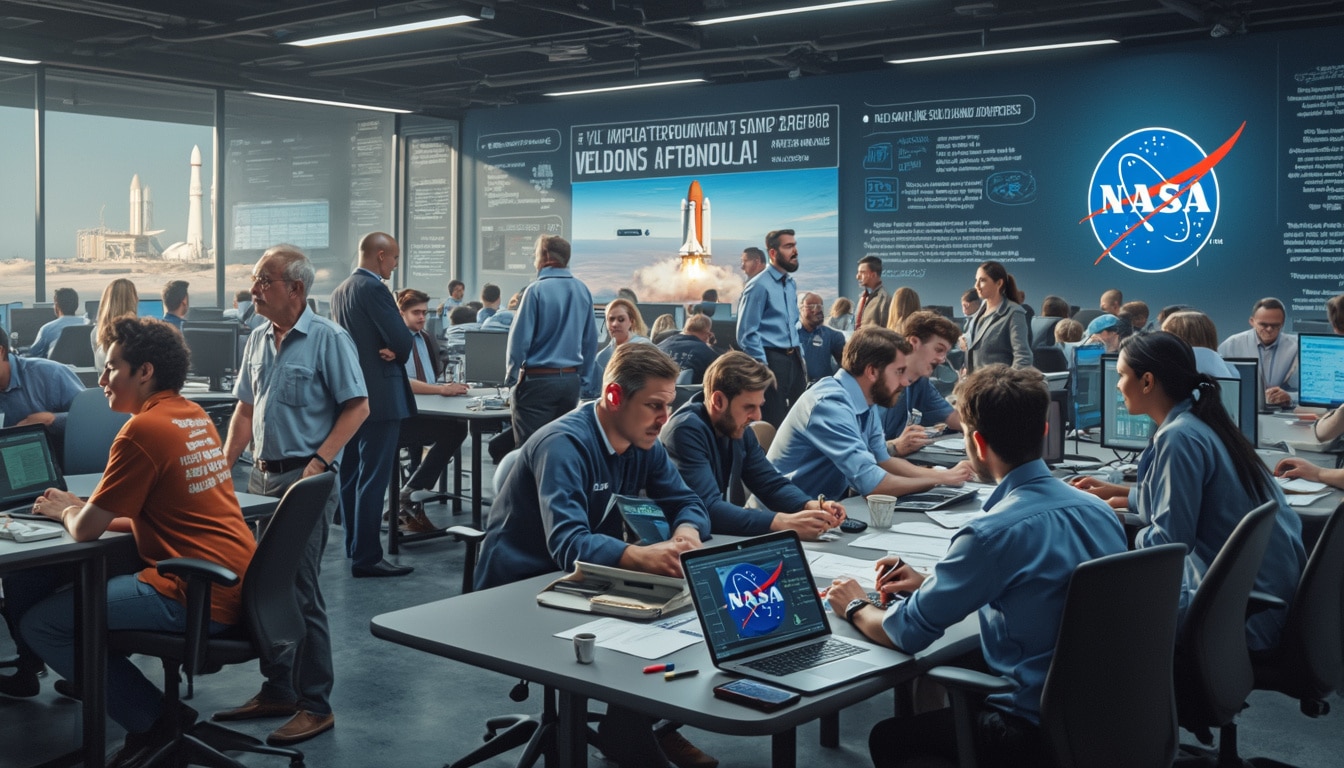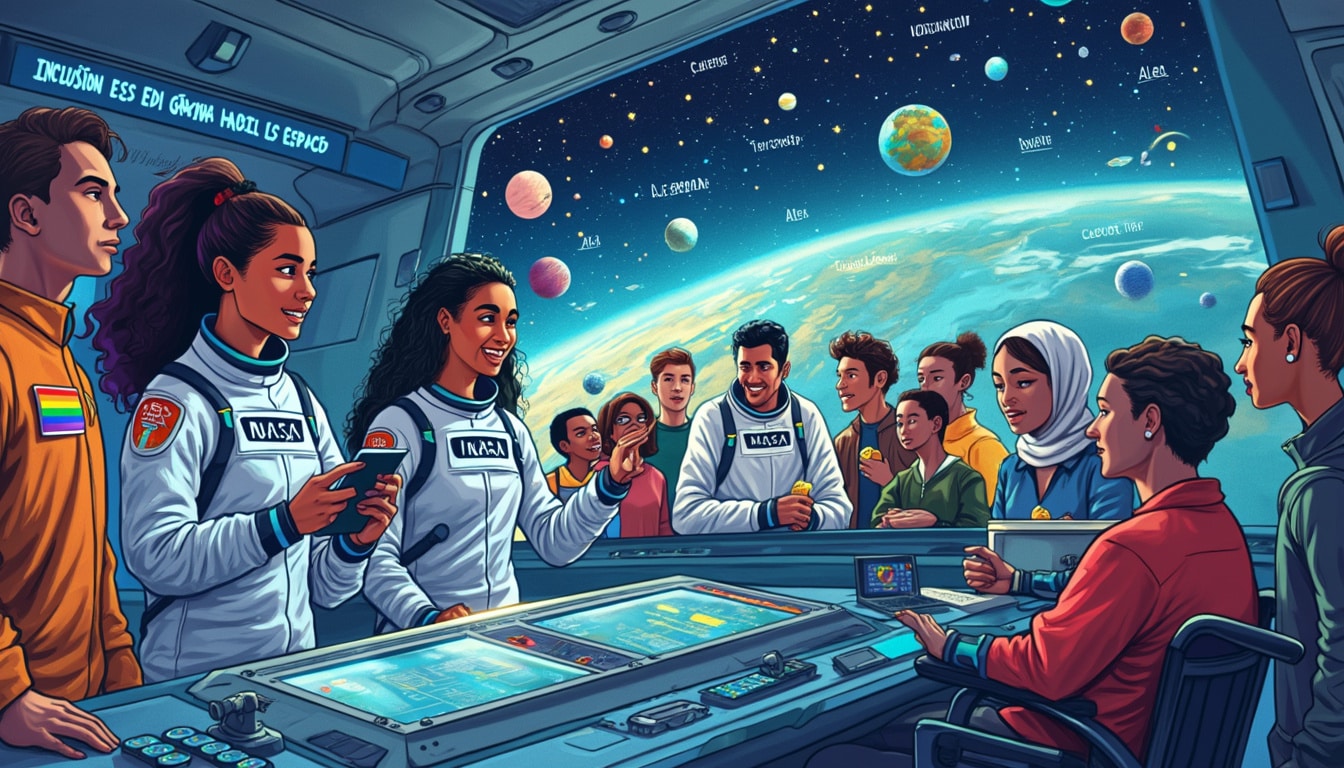The recent developments at NASA have illuminated a growing tension between federal directives and the values of individual expression within the agency. Reports of employees being ordered to remove LGBTQI+ symbols from their workspaces have sparked emotions and discussions not just within NASA, but across the broader societal fabric. This situation highlights the intersection of governmental policy, organizational culture, and individual rights, drawing attention to what it means to be a part of such an esteemed institution dedicated to exploration and innovation.
In the wake of President Trump’s executive orders, which have forced federal agencies, including NASA, to reevaluate their diversity, equity, inclusion, and accessibility (DEIA) initiatives, employees find themselves navigating a complex landscape of rapidly shifting expectations. The agency’s response to these changes has significant implications for its workforce, especially for those who identify as part of the LGBTQI+ community.
Current State of Affairs at NASA
NASA has faced a critical examination of its practices following directives that require the removal of references and symbols related to DEIA initiatives. The reports that emerged suggested that staff were instructed to eliminate any displays of LGBTQI+ Pride, igniting a fierce debate about freedom of expression and the responsibilities of public institutions. Notably, NASA spokespersons have described these actions as reminders of existing guidelines pertaining to workplace decorum, claiming that there are “no new bans” on personal items in employees’ workspaces.
Yet, despite these assurances, whispers of discontent have spread among employees, some of whom argue that the perceived need to sanitize personal areas of expression undermines their identities. This discontent has been further amplified by community responses that decry such restrictions as a violation of personal liberties.

The Mission of NASA and its Workforce
As a leader in scientific exploration, NASA’s mission extends beyond technological achievements and space discoveries. The agency seeks to foster a diverse and inclusive workforce that reflects the myriad peoples and cultures of our world. It has historically championed initiatives aimed at increasing representation across various demographics, promoting an environment where every employee can thrive.
However, the recent policy shifts raise critical questions about the agency’s commitment to these values. Critics argue that the elimination of DEIA-related symbols and language signals a retreat from this mission, potentially impacting morale and the overall effectiveness of the organization. A disengaged workforce could disrupt both daily operations and long-term goals, highlighting the need for decisive leadership amid these transformations.
Responses from NASA Leadership
In response to these allegations, NASA leadership has expressed intentions to clarify its stance. The agency’s internal communications have emphasized the importance of adherence to federal regulations, while maintaining that personal expression remains valued. Yet, many employees remain skeptical, fearing that their opinions and identities might be stifled under current directives.
In a recent memo, acting NASA administrator Janet Petro outlined compliance expectations, emphasizing that failure to report non-compliance could lead to repercussions. This approach, while intended to instill discipline, has been interpreted by some as a mechanism of surveillance rather than support. Observers argue that creating an environment of fear is counterproductive to fostering creativity and innovation—marks of NASA’s identity.
Internal and External Criticism
The internal backlash from employees is met with external criticism from advocacy groups. A joint statement from members of the U.S. House Space and Aeronautics Committee condemned the policy changes as a “direct assault on free speech and humanity.” Such perspectives resonate widely among advocacy groups, which view the removal of LGBTQI+ symbols as part of a broader attempt to undermine the rights of marginalized communities across federal agencies.
This sentiment underscores the delicate balance that organizations like NASA must strike between federal compliance and maintaining a supportive work culture. As the agency considers its next steps, it faces the risk of alienating key talent in a competitive field where diversity is increasingly recognized as essential for innovation.

The Future Trajectory of NASA
As NASA navigates this contentious period, the implications extend beyond its employees. Public perception plays a crucial role in shaping the agency’s future and its ability to attract investment and collaboration worldwide. The narrative surrounding NASA’s commitment to inclusivity and diversity will undoubtedly influence its international image.
Moreover, the intersection of politics and science continues to evolve, prompting both the public and scientists to reevaluate the roles of federal agencies in advocating for cultural change and policy reform. The reverberations of NASA’s decisions will likely resonate within other federal systems, providing a pivotal case study on the balance of authority, employee rights, and institutional values.
Potential Solutions and Path Forward
The road ahead for NASA requires thoughtful reflection and deliberate action. Establishing open lines of communication between leadership and employees can facilitate understanding and collaboration within the agency. Initiatives that enhance transparency and allow for employee input could help mend relationships strained by recent policy changes.
Rather than issuing mandates that could harm the cultural fabric of the organization, fostering a collaborative approach to policy implementation is crucial. By creating forums where employees can share their concerns and suggestions, NASA can reestablish trust and confidence in its leadership.

Final Thoughts on NASA Policies
Ultimately, the future trajectory of NASA will depend on its ability to strike a balance between compliance with political directives and its foundational commitments to diversity, equity, and inclusion. The voices of its employees, particularly those at the intersection of marginalized identities, must be prioritized in shaping an agency that reflects the values of the society it serves.
This ongoing dialogue will prove pivotal in establishing an environment where innovation can flourish. As humankind reaches towards the stars, it is imperative that all individuals—regardless of their identities—feel empowered and included in that journey.
Engaging with the Community
The NASA community, inclusive of its employees and supporters, must come together to foster a culture that values all individuals. Engaging with external advocacy networks and educational initiatives presents an opportunity not only for internal growth but for influencing public discourse on equity and representation. Rebuilding the agency’s identity in a way that reconciles governmental directives with a commitment to its workforce’s welfare is essential to ensuring that NASA not only leads in space exploration but also in social justice.




Leave a Reply